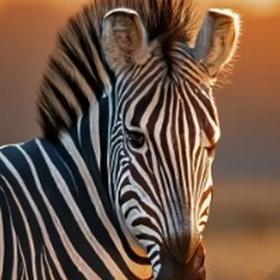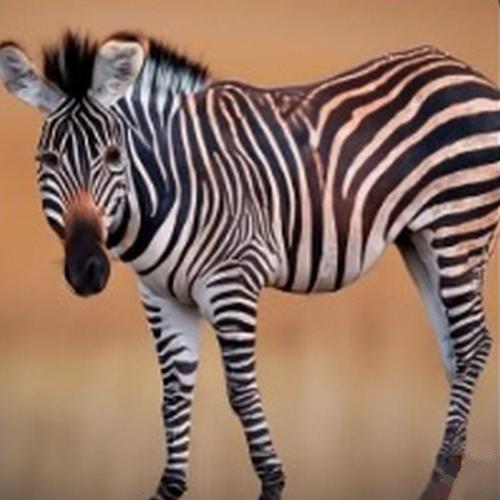How Fast Zebras Run
Zebra Speed in the Wild
In the wild, zebras are known for their remarkable speed, with some impressive statistics to back it up. These incredible creatures can reach speeds of up to 65 kilometers per hour (40 miles per hour), making them one of the fastest land animals. Their speed serves as a crucial defense mechanism against predators like lions and hyenas, allowing them to evade potential threats.
Zebras' unique black and white stripes also play a role in confusing predators during high-speed chases, a phenomenon sometimes called 'motion dazzle'.
It's truly fascinating how their natural adaptations have enabled them to become such swift and agile runners in their wild habitats.
Factors Affecting Zebra Speed
When it comes to the impressive speed of zebras, several factors come into play.
Genetics plays a pivotal role. Zebras have evolved to have long, slender legs built for speed, enhanced by their lightweight bodies and powerful muscles designed for swift movement.
Environmental factors also play a part. Terrain and weather affect how fast a zebra can run. In open plains, they can reach their top speeds, while rocky or uneven terrain may slow them down.
Adaptations for Speed

Anatomy and Physiology for Speed
The anatomy and physiology of zebras play a pivotal role in their incredible speed. First, their long, muscular legs provide the foundation for swift movement, allowing them to reach speeds of up to 65 kilometers per hour (40 mph). These legs are designed for endurance, as zebras often need to outrun predators.
Zebras' hooves are hard and durable, built for running across various terrains without wearing down quickly. Their large lungs and heart facilitate efficient oxygen supply, sustaining their energy during intense sprints.
Additionally, a zebra's lightweight body and streamlined form reduce air resistance, enabling them to maintain their pace for extended periods. All these factors combine to make zebras remarkably fast creatures.
Behavioral Adaptations for Fast Run
Behavioral adaptations play a crucial role in enabling zebras to achieve their impressive speeds. One remarkable aspect is their social structure.
Zebras often form groups, or "dazzles," enhancing safety. Within these groups, they position weaker or younger individuals towards the center, shielding them from potential predators.
When threatened, zebras exhibit a unique behavior: they zigzag while running, making it harder for predators to target a specific individual.
Additionally, their alertness and constant vigilance contribute to their ability to react swiftly to danger. These behavioral adaptations, combined with physical attributes, make zebras highly effective runners.
Zebra Speed Compared to Other Animals
Zebra vs. Lion: Who's Faster?
In the epic race of speed between zebras and lions, it's a thrilling showdown of survival in the African savannah. Zebras, with their powerful legs and aerodynamic bodies, can reach speeds of up to 65 kilometers per hour (40 mph). They rely on their agility and stamina to outmaneuver predators.
Lions, on the other hand, are formidable sprinters, capable of bursts of speed up to 80 kilometers per hour (50 mph). However, their endurance is limited. Lions often rely on ambush and teamwork.
When it comes to a short-distance dash, lions may have the edge, but zebras' stamina and evasive maneuvers often help them win the long game in this fascinating race for survival.
Zebra vs. Horse: A Speedy Comparison
The comparison between zebras and horses is truly fascinating. Zebras, known for their distinctive black and white stripes, are surprisingly agile. They can reach speeds of up to 40 miles per hour (64 kilometers per hour) when galloping across the savannah.
Horses, domesticated for centuries, can achieve similar speeds, with some racing breeds like the Thoroughbred even exceeding 50 miles per hour (80 kilometers per hour) over short distances.
While specific breeds of horses can be faster in a sprint, zebras possess wild agility and endurance crucial for escaping predators, making direct comparisons complex but interesting.
Fun Facts About Zebras
Species: There are three primary species of zebras: the Plains Zebra (most common), the Grevy's Zebra (largest, narrowest stripes), and the Mountain Zebra (found in mountainous areas).
Stripes are Unique: No two zebras have the same stripe pattern, much like human fingerprints. This distinctiveness helps zebras recognize each other.
Camouflage?: While not blending into green grass, the stripes may work as camouflage by breaking up the zebra's outline (disruptive camouflage) or confusing predators in low light or within a moving herd (motion dazzle).
Social Structure: Zebras are social animals living in groups called "harems" (one stallion, several mares, and foals) or "bachelor herds." Several harems may group together to form larger "dazzles."
Communication: Zebras have excellent hearing and communicate through various vocalizations, including barks, brays, and snorts, as well as body language.

Zebra has a unique charm, and its amazing speed and peculiar black and white appearance have attracted a large number of "fans". If you like zebra or are interested in it, you can make related Custom Keychains and pin them on your keys as decorations, which is also very cute.
Conclusion: The Swift Zebra
In conclusion, zebras are remarkably fast animals, capable of reaching speeds up to 40 mph (65 km/h). Their speed, combined with unique physical and behavioral adaptations like their stripes, muscular legs, endurance, and zigzag running patterns, is crucial for their survival in the predator-filled African savanna. These adaptations make them fascinating examples of evolution in action.